2024 Лучшие бесплатные Deepnude AI: AI обнаженные
Ниже представлен список лучших AI-приложений для создания ню, которые стоит проверить!

You don't need advanced artistic skills to create stunning visuals anymore. With carefully crafted prompts, you can generate compelling images in minutes. The secret is Stable Diffusion.
Stable Diffusion leverages the creativity of generative AI to do the heavy lifting–you provide descriptive text to convey your envisioned image, and the AI generates it.
Standing alongside pioneers like DALL-E for its impressive image-generation capabilities, Stable Diffusion has taken the AI art world by storm despite being relatively new.
Let's explore how you can start using Stable Diffusion to produce your own unique images. This guide will show you how to craft prompts to communicate your vision to the AI clearly.
With just a bit of text, you'll unlock Stable Diffusion's complete artistic potential.

Stable Diffusion is the name for the technology, and while you can download it and run it on your computer yourself, plenty of platforms out there give you much more straightforward, more controlled access to the tech with a ton more features and functions.
All coming together to help you create the art you have in mind.
Here are some of your guide to the top choices:
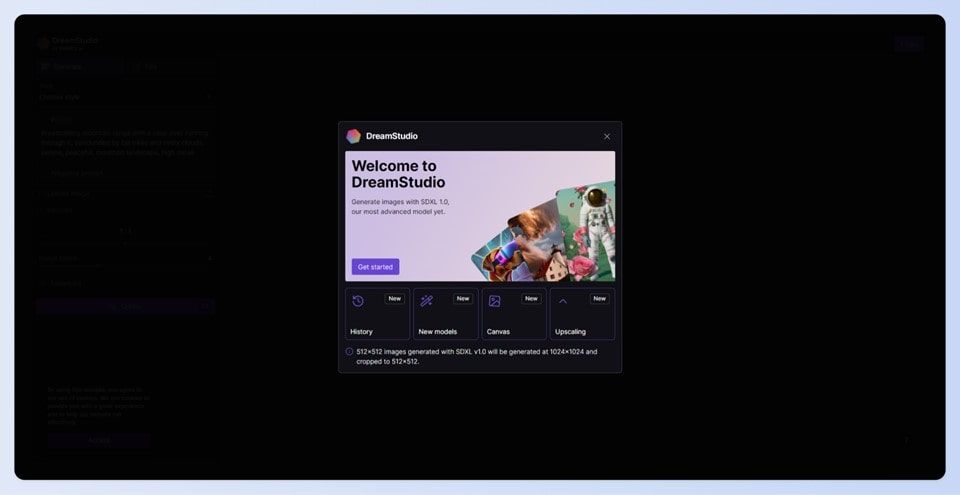
As the pioneers behind Stable Diffusion, Dream Studio offers a premier platform for AI image generation. No steep learning curve - just start creating right away.
Dream Studio is the best choice for smooth onboarding and quick results if you want to dive into AI art creation without frustration.
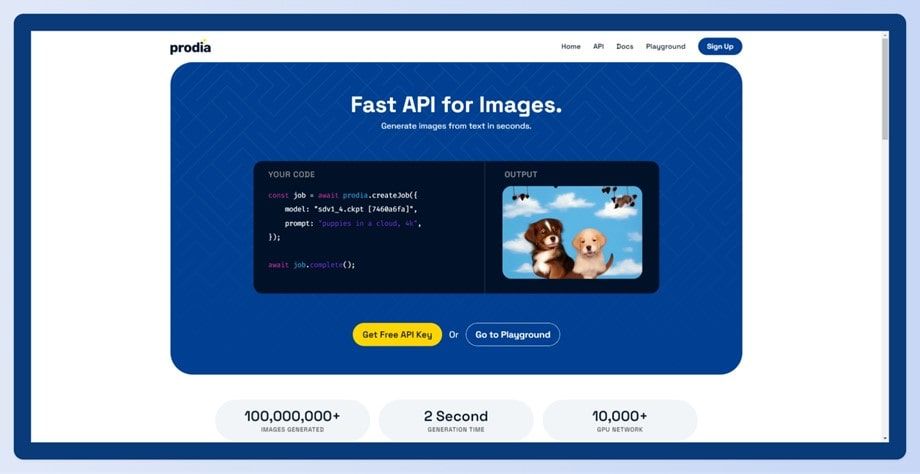
Need art fast? Prodia delivers. Thanks to their robust network of 10,000 GPUs, they can whip up images from text prompts in under 4 seconds flat–a rapid turnaround that makes it a breeze to produce high volumes of images in different styles.
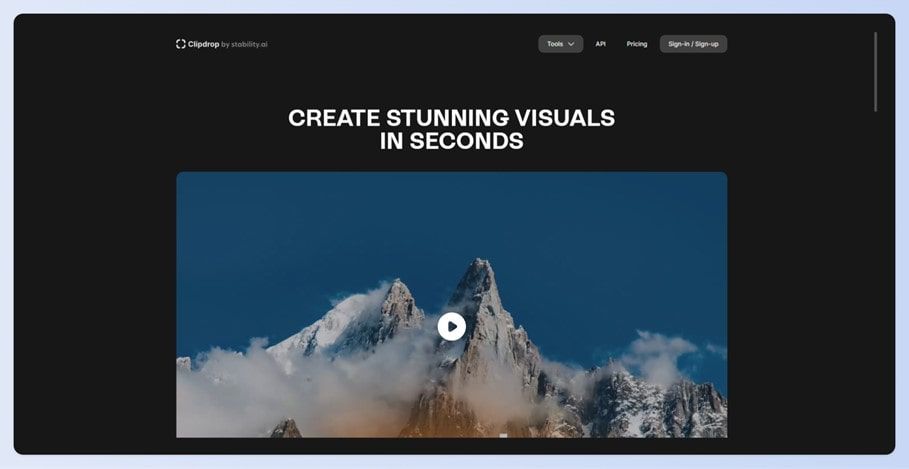
Clipdrop's Stable Diffusion XL leads the pack for ultra-high-resolution, photorealistic images. This enhanced version pushes AI capabilities to new heights and allows for incredible detail and realism. If you’re looking to turn sketches into masterpieces or generate landscapes that look real, Clipdrop’s your bag.
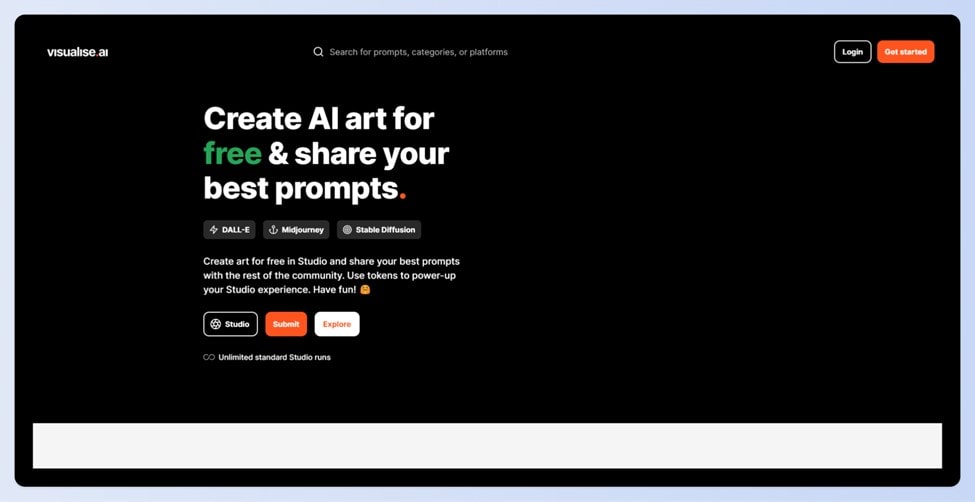
If you want to keep your AI artistry all in one place, VisualizeAI is a good fit. Their toolbox comes loaded with powerful design tools to make your creative visions come alive. You can swiftly turn rough napkin sketches into fully rendered masterpieces and play around with different styles.
All of this and budget-friendly pricing plans make VisualizeAI worth a look for artists seeking an all-in-one creative workspace.
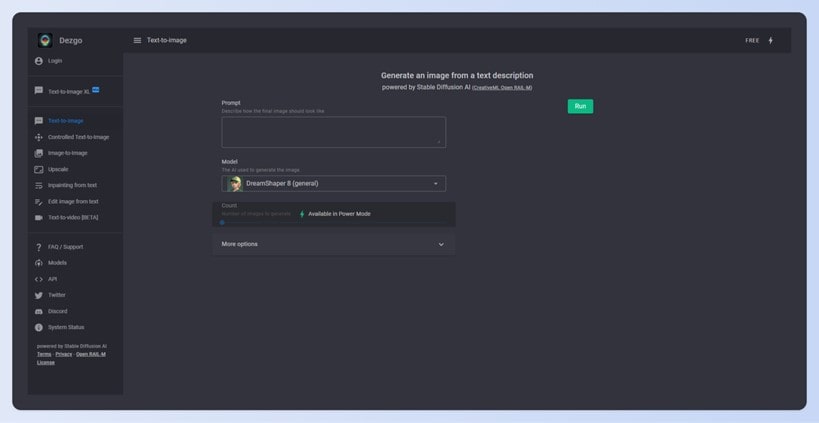
If you're looking for more hands-on control over your AI art, Dezgo's worth a look. You can customize resolution, give feedback to guide the AI and tweak parameters to really dial in on your prompts. If having exceptional direction over the final product is your goal, Dezgo gives you impressive flexibility to craft images exactly how you envision.
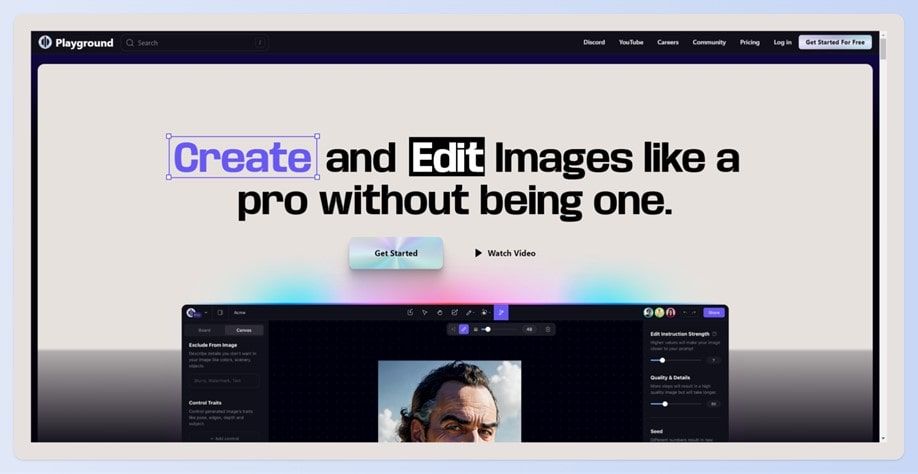
If you've got a team of creatives collaborating on AI art, PlaygroundAI could be a handy tool. Their platform makes it easy to blend multiple concepts into cohesive visions and evolve ideas together. With their emphasis on collective creativity, PlaygroundAI is excellent for sparking innovation when you've got a group bouncing ideas off each other.
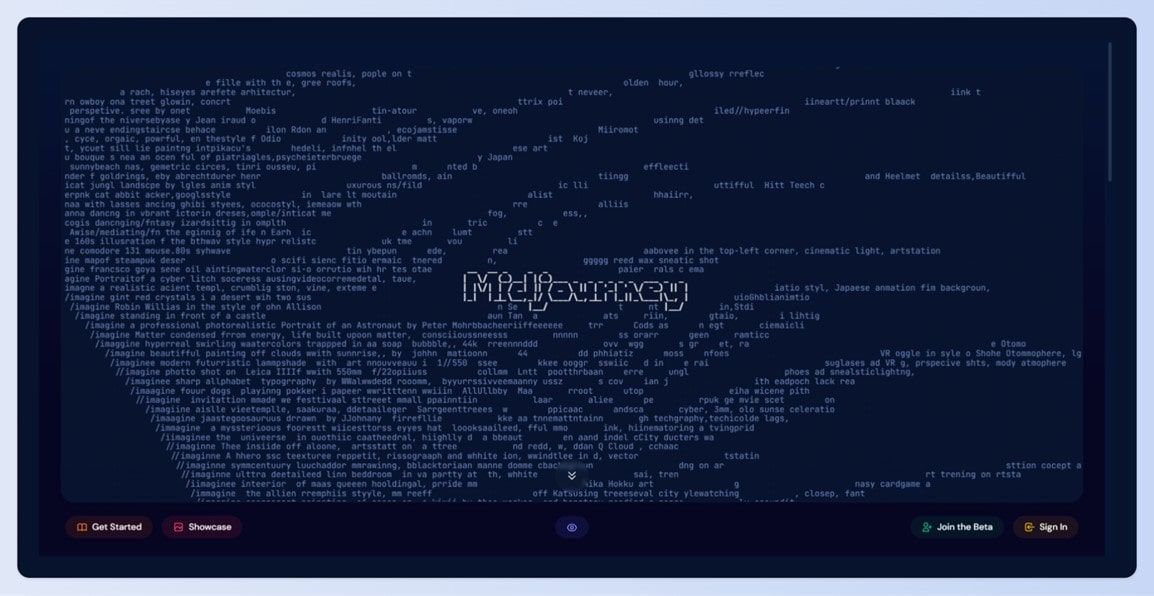
As one of the most accessible Stable Diffusion platforms, Midjourney offers an easy onramp with its intuitive interface. As one of the most accessible Stable Diffusion platforms, it provides a straightforward way for first-timers to start exploring AI art. Midjourney's clean layout is a top choice for a smooth, hassle-free way to get your feet wet with AI art.
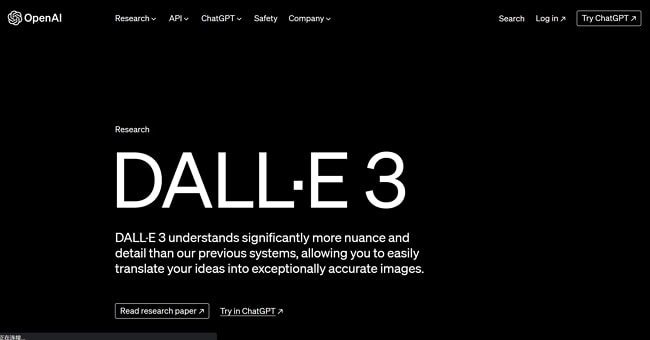
If you aim to create the most hyper-realistic AI art possible, DALL-E 3 should be on your radar. With its unmatched ability to generate crazy, lifelike images down to the finest details, DALL-E 3 sits at the top when it comes to pushing AI art to the limits. Plus, AI powerhouse OpenAI backs it, so you’re getting the cutting edge for peak realism.
The possibilities are endless when picking an AI art platform, so it’s best to consider your needs and what you want to create. Are you a total newbie or a pro artist? Do you need speed or maximum control? What's your budget?
Once your priorities are clear, you can zero in on the platform that fits you best. With the right platform, you'll produce visionary AI-generated artwork fast!
We have a ton of guides focusing on the major platforms here on Top AI News, like Midjourney and Dall-E, so for this guide, we're going to mix things up by focusing on something a little different: Clipdrop.
Clipdrop offers a straightforward, user-friendly process that doesn’t require an account, allowing everyone from absolute beginners to seasoned artists to generate AI art effortlessly.
Here's a simple guide to get you started:
● Visit the Clipdrop website and go for Stable Diffusion XL.
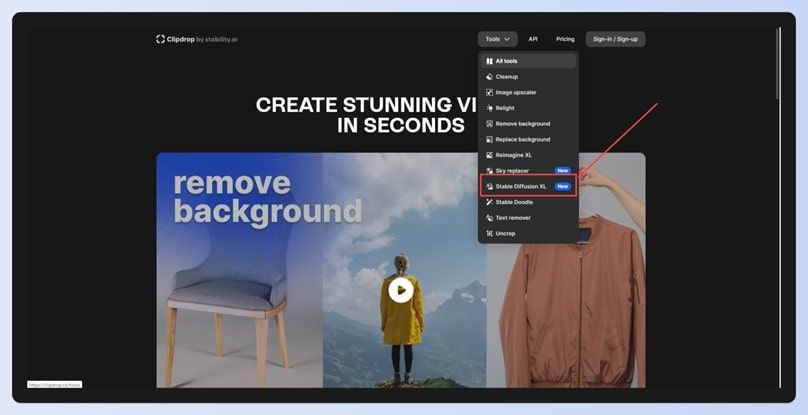
● Input your prompt and hit the 'generate' button.

● The AI will present you with four unique, AI-produced alternatives based on your prompt.
If you’re fixing to delve deeper into customization, you can click on the Options icon in the prompt box, where you’ll have access to a plethora of settings:
● Style: Choose from a wide array of options, from Anime, Photographic, Digital Art, Comic Book, Fantasy Art, Analog Film, Neon Punk, Isometric, Low Poly, Origami, Line Art, Cinematic, 3D Model, and Pixel Art.
● Aspect Ratio: Selections range from 21:9, 16:9, 3:2, 4:3, 1:1, 4:5, to 9:16, catering to various layout requirements.
● Negative Prompt: Specify elements you'd prefer to keep out of your image.
Once you feel like you’re getting the hang of Clipdrop, you can take the experience a step further–and signing up for a free account is the best way to do it. An account will bring you the luxury of generating up to 400 watermarked images daily and even more chances to experiment!
When you're happy with the workflow, signing up for a premium account will let you ditch the watermark so you can use your synthesized masterpieces as your own. Signing up for an account will also give you access to tools like:
If you’re a power user (and want to use Stable Diffusion), you’ll need the Pro plan, which starts at $9/month. It offers 1,500 daily unwatermarked images and unrestricted use of Clipdrop's most cutting-edge tools.

As mentioned above, Dream Studio are the brains behind Stable Diffusion itself. So, with them, you get more fine-tuned control over your AI artistry. They also don't watermark your images by default–what you make is yours to keep!
Here's a simple guide to harnessing the power of this preferred option:
● Visit DreamStudio. Click 'Login' on the top-right corner and create a new account.
● After signing up, you’ll automatically receive 25 free credits to experiment with three different prompts - you can create around 100 images using the default settings.
DreamStudio offers an array of controls on the left sidebar, enabling greater customization than other platforms like DALL·E 2 or Clipdrop.
But to ease into it, we'll keep things straightforward initially:
● Style: Choose your desired style for Stable Diffusion to generate.
Options include Anime, Photographic, Digital Art, Comic Book, Fantasy Art, Analog Film, Neon Punk, Isometric, Low Poly, Origami, Line Art, Craft Clay, Cinematic, 3D Model, or Pixel Art.
The default 'Enhance' option outputs realistic but not photorealistic images.
● Prompt: This is the crux of your input. Here, you describe what you want Stable Diffusion to create. A random suggestion is always available for inspiration, but you can enter anything you fancy.
Some interesting ideas could be:
● 'A painting in the style of Vermeer of a large fluffy Irish wolfhound enjoying a pint of beer in a traditional pub'
● 'A Canadian man riding a moose through a maple forest, impressionist painting'
● 'A portrait of a cartoon purple cow, high definition digital art.'
Once you've entered your prompt, you can choose to ignore the other settings for now and click 'Dream.'
The numbers on the button indicate how many credits it will cost to generate the artwork with the selected settings (by default, this is 7.2).
Once DreamStudio finishes rendering, it presents you with four design options.
Select your favorite and use the buttons at the top-right sidebar to download it, upscale the resolution, reuse the prompt, generate additional variations, edit it, or even set it as the initial image—making it a part of your following prompt.
Note: DreamStudio allows you to purchase additional credits for an affordable price ($10 for 1,000 credits) to continue creating even after your free credits run out.
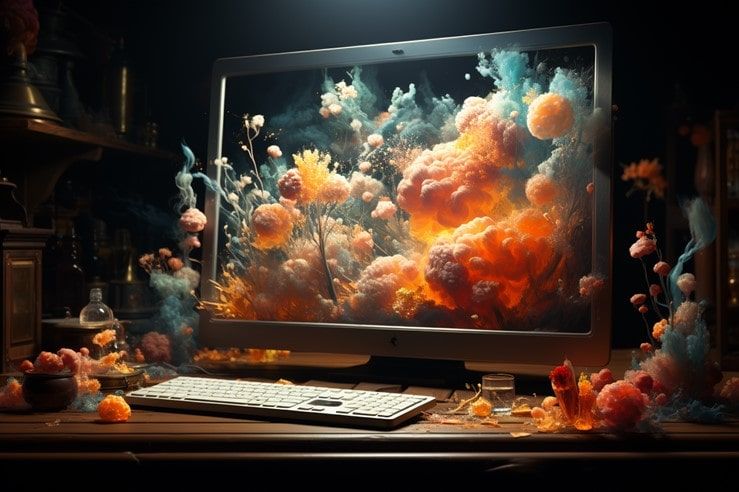
The power of Stable Diffusion primarily lies in its prompts and settings, allowing you to get precise control over the images it generates. Mastering prompt writing is key to getting the best results, regardless of your chosen platform.
The prompt box is where the magic happens. Here are some tips:
● Specificity - Be as specific as possible about what you want to see. Say "bananas" instead of just "fruit."
● Simplicity - Avoid overly complex prompts that may confuse the AI.
● Details - Include descriptors about the subject, medium, environment, lighting, color, mood, composition, etc.
● Trial and Error - Experiment and iterate to learn what works.
The negative prompt box lets you exclude unwanted elements. For example:
● "no hills, grass, trees, fields, farms"
This can help direct your results.
In DreamStudio, you can include an image to influence composition, color, etc.
● Upload an image and adjust impact intensity (35% is a good starting point).
● Example: Photo of someone running + prompt "a zombie running through the woods."
Stable Diffusion settings that impact cost per generation:
● Aspect Ratio - Default is 1:1, but other ratios available
● Image Count - Generate up to 10 images per prompt
● Prompt Strength - Influence of prompt on the image (1-30 scale)
● Generation Steps - More steps usually mean better quality
● Seed - Random seed that ensures consistent results
● Model - Choose from 5 different Stable Diffusion models
These advanced settings give you more control over the AI's process. Understanding them helps refine your images regardless of platform.
Getting the most out of Stable Diffusion comes down to really mastering prompts and having fun experimenting–the more you play around, the better you'll get at guiding the AI to create exactly what you envision.
The key is practice - the more you use it, the more natural you'll get at generating breathtaking AI artwork.
This technology is constantly evolving, so remember to follow Top AI News for the latest updates, insights, tips, and tricks in AI advancements.